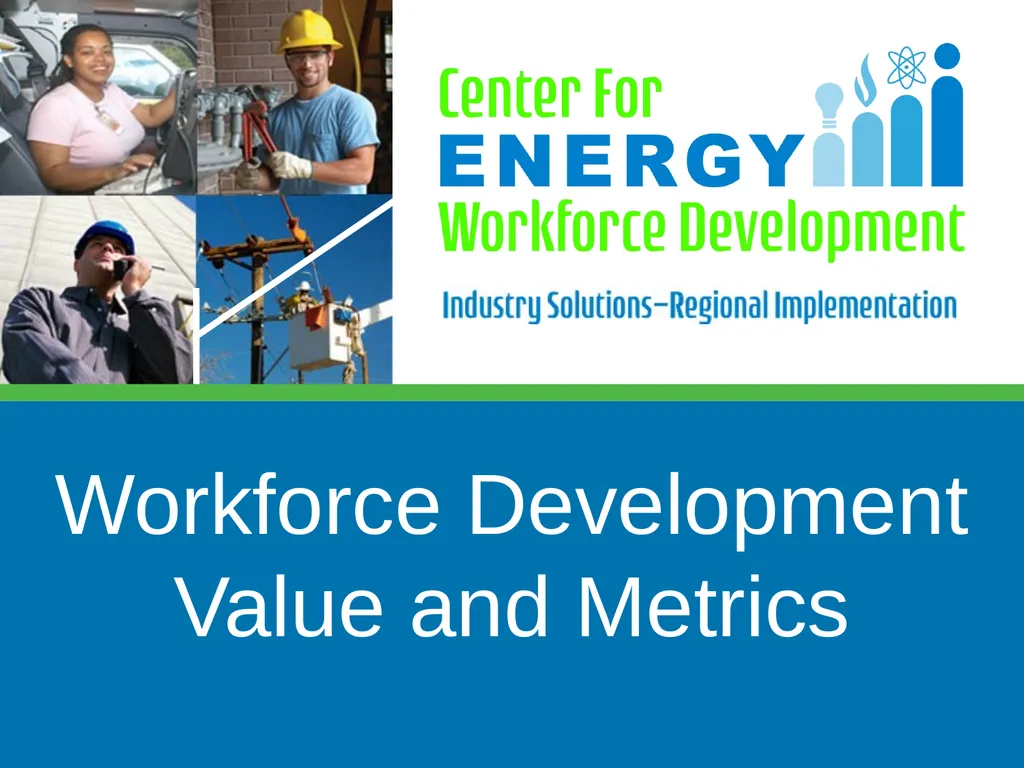Based on a 2015 CEWD Member Survey: 82% believe
Author : calandra-battersby | Published Date : 2025-06-27
Description: Based on a 2015 CEWD Member Survey 82 believe that High School and College Students in your state are not adequately prepared for energy careers Respondents rated their companys engagement with education providers at 34 out of 5
Presentation Embed Code
Download Presentation
Download
Presentation The PPT/PDF document
"Based on a 2015 CEWD Member Survey: 82% believe" is the property of its rightful owner.
Permission is granted to download and print the materials on this website for personal, non-commercial use only,
and to display it on your personal computer provided you do not modify the materials and that you retain all
copyright notices contained in the materials. By downloading content from our website, you accept the terms of
this agreement.
Transcript:Based on a 2015 CEWD Member Survey: 82% believe:
Based on a 2015 CEWD Member Survey: 82% believe that High School and College Students in your state are not adequately prepared for energy careers Respondents rated their company’s engagement with education providers at 3.4 out of 5 Respondents rated their company’s workforce planning process at 3.26 out of 5 Respondents gave their companies efforts on recruiting diverse candidates a 2.06 out of 4 Only 32.7% of respondents use metrics to measure the success of Pipeline Development efforts Are you adding value with your workforce efforts? 2 Confidential and not for distribution outside of CEWD membership Five things employers can do to develop a diverse, qualified pipeline of applicants 3 Make it easier for them to find us, understand our jobs, and what education pathways in your region will lead to an energy job. Signal to students, job seekers and educators which credentials are required, preferred, and recognized by employers in your state, and are being used in hiring decisions. Develop partnerships with other employers and educators to engage students from interest through employment. Organize and educate within your company to communicate strategies, initiatives, policies and funding and Align company personnel, systems, policies and practices to support the needs of diverse, qualified applicants. Provide data on the timing and demand for jobs in your company and feedback to educators and pipeline organizations on the quality of hires from their organizations. What’s the benefit of pipeline development efforts? It’s the first question we are asked and the hardest answer to prove Why is calculating ROI important? It quantifies project value It can build stakeholder support It can uncover additional benefits It can help to prioritize effective initiatives or stop ineffective initiatives Is ROI the same as value? ROI is calculated at a point in time – think P & L Value creation occurs over time, not a point in time – think Balance Sheet A combination of Key Performance Indicators including ROI can measure value over time How do you calculate the value of creating a diverse, qualified pipeline of applicants? So the question is… 7 Before we can calculate value – we have to define it ? ? ? Value for Employers Lower overall recruiting costs and cycle time Higher pass rates on pre-employment screening Ability to select from a more qualified and diverse applicant pool New hire “fit” and retention Value for Students Save time and money by completing














